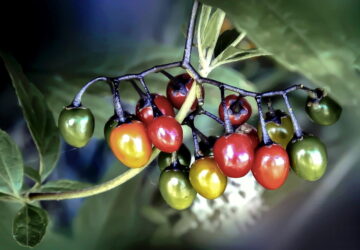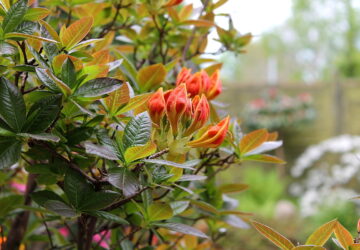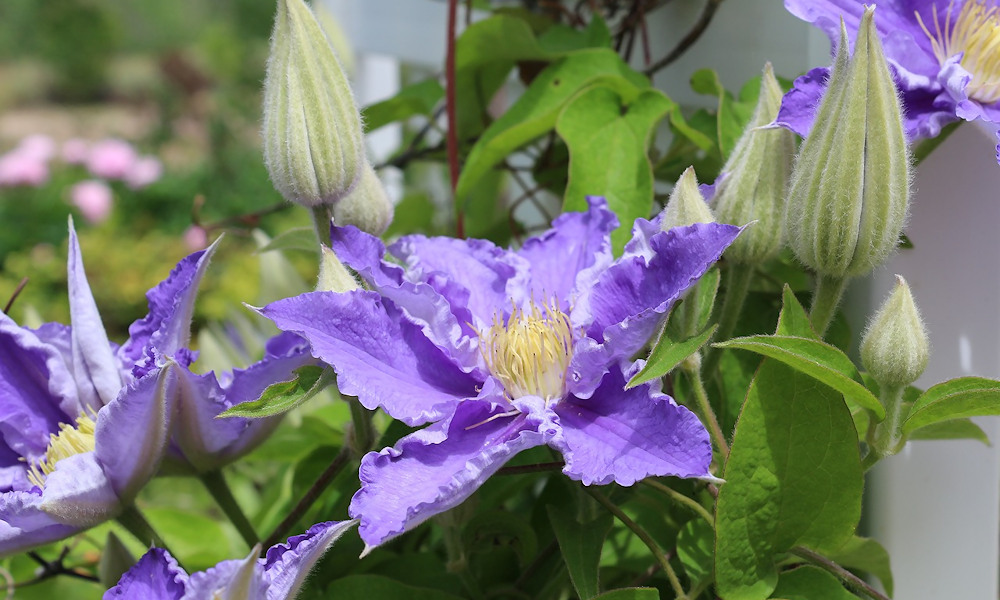Discover the captivating world of Clematis, where delicate vines adorned with an array of vibrant flowers intertwine to create a mesmerizing display. In this article, we delve into the origins, cultivation tips and the sheer joy of incorporating Clematis into your garden, providing a quick guide for both novice and experienced gardeners alike.
Clematis is a beautiful and popular ornamental plant known for its stunning flowers and vining habit. It belongs to the Ranunculaceae family and is native to various regions around the world, including Europe, North America and Asia. There are over 300 different species of Clematis, each offering unique characteristics and flower forms.
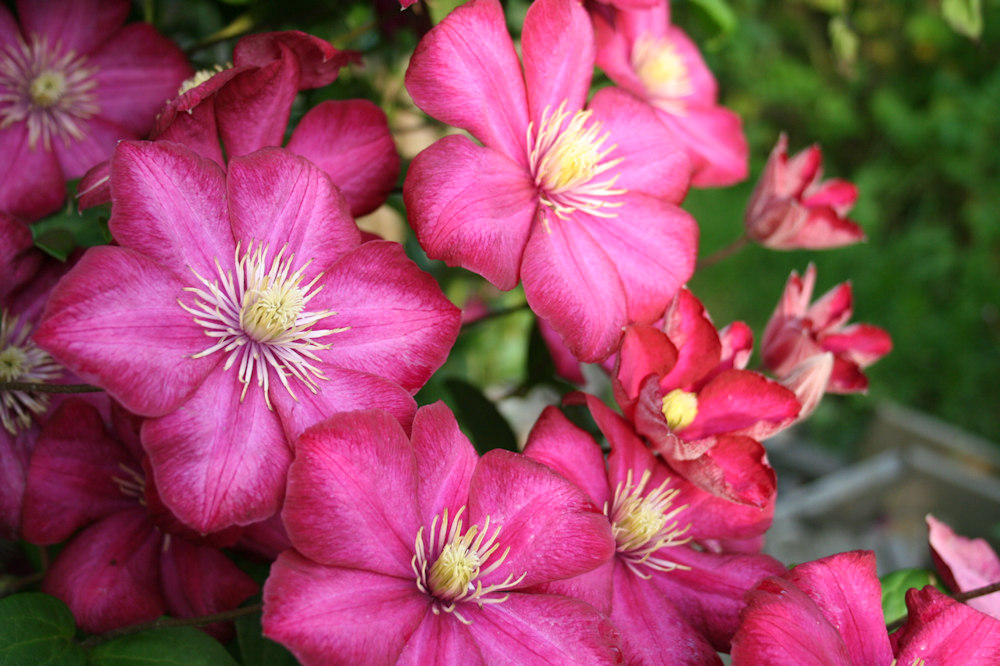
Origin
Clematis has a diverse origin, with different species found in different parts of the world. Some species are native to Europe, such as Clematis montana and Clematis vitalba. Others, like Clematis virginiana, are native to North America. Asia is home to many Clematis species, including Clematis integrifolia and Clematis terniflora. Breeders and enthusiasts have also developed numerous cultivars and hybrids with enhanced features and colors.

Description
Clematis is a climbing plant that can add vertical interest and beauty to your garden. It has woody vines that can grow anywhere from a few feet to over 20 feet (6 m) in length, depending on the variety. The foliage is generally green, and some species have attractive serrated or deeply lobed leaves. The flowers are the highlight of Clematis, coming in a wide array of colors, including white, pink, purple, blue and red. They can be single, double or semi-double, and their shape can range from bell-like to star-shaped, depending on the species or cultivar.
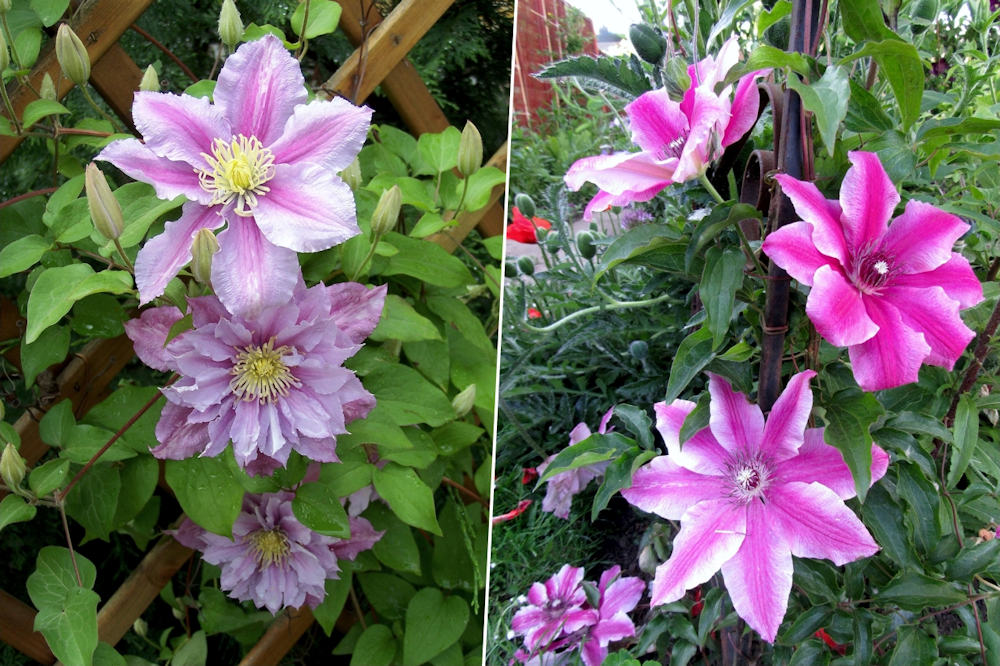
Needs
Sunlight
Most Clematis varieties prefer full or partial sunlight. They generally require at least 6 hours of direct sunlight per day for optimal growth and flower production.
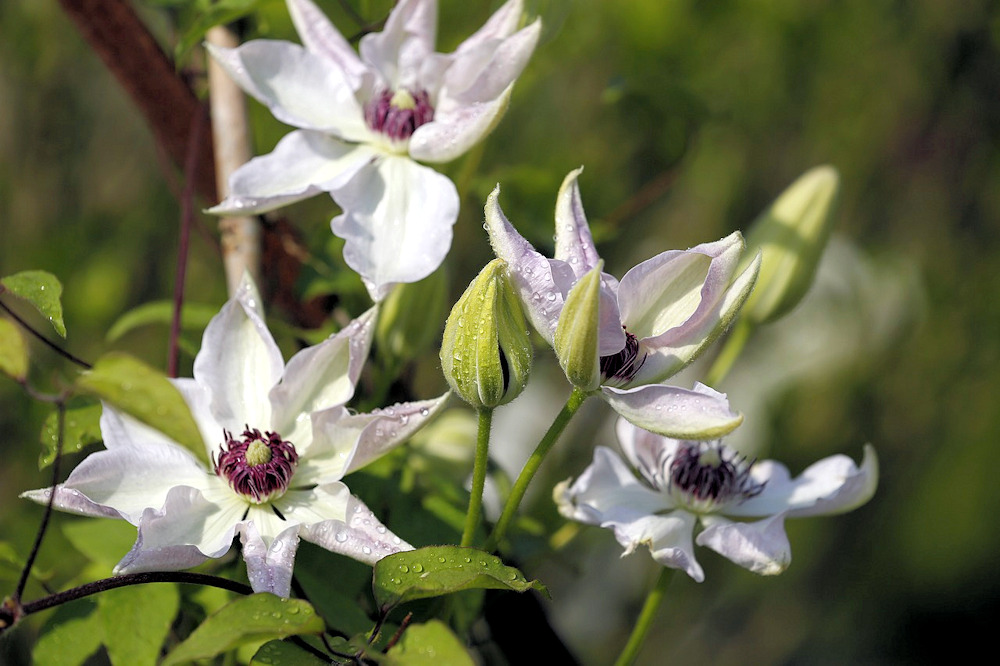
Soil
Clematis prefers well-draining soil that is fertile and rich in organic matter. A slightly acidic to neutral pH range of 6.0 to 7.0 is ideal. Ensure the soil is moist but not waterlogged.
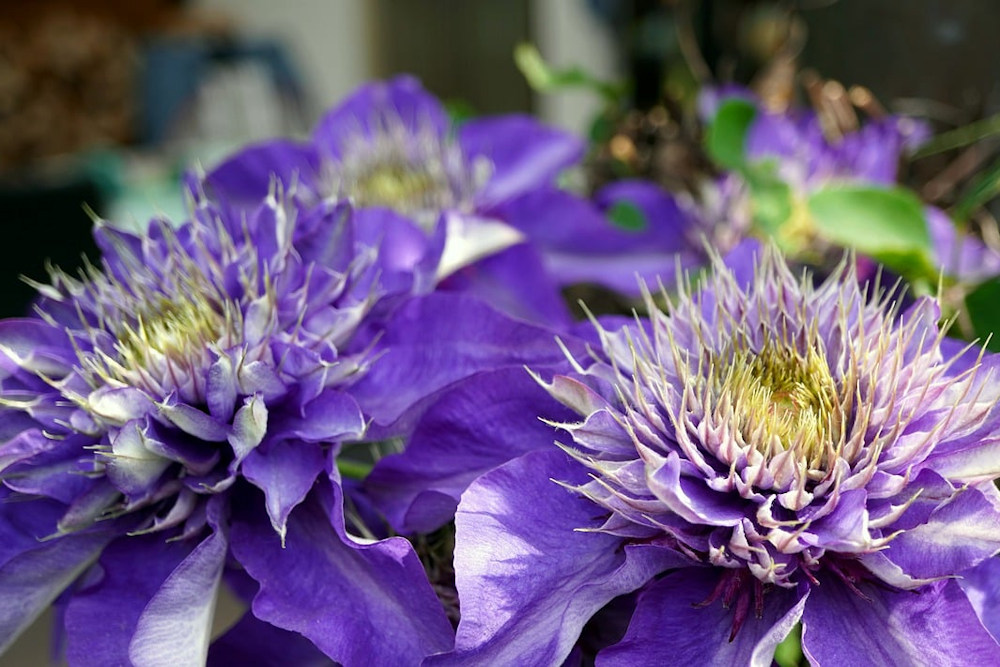
Watering
Regular watering is essential, especially during the growing season. Aim to keep the soil evenly moist, but avoid overwatering, as it can lead to root rot. Mulching around the base of the plant helps retain moisture and regulate soil temperature.
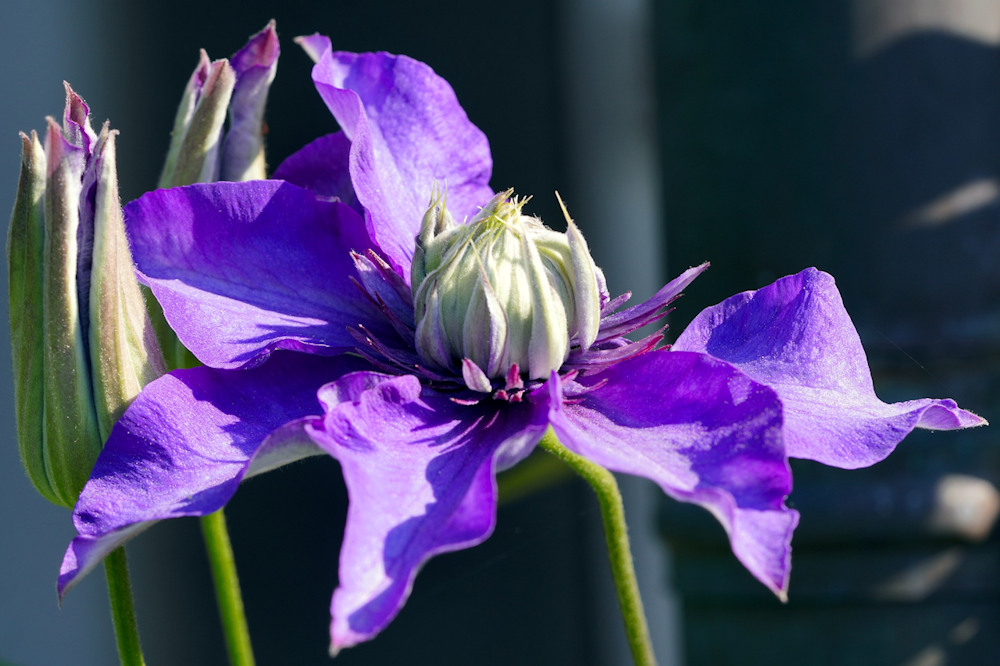
Support and Training
As a climbing plant, Clematis requires support structures such as trellises, fences or arbors to grow and twine onto. Ensure the support is sturdy enough to hold the weight of the plant as it matures. You may need to gently train the vines onto the support initially.
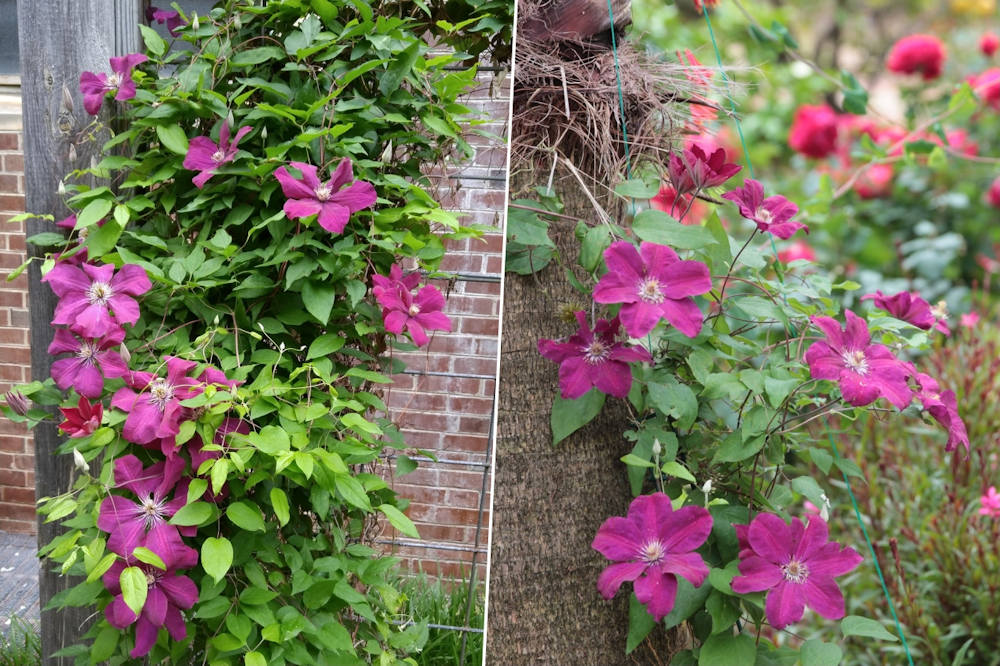
Pruning
Pruning is necessary to maintain the health and shape of Clematis. The pruning requirements vary depending on the Clematis group, which is categorized into three main types: Group 1 (early-flowering), Group 2 (large-flowering) and Group 3 (late-flowering). It’s important to know which group your Clematis belongs to and follow the appropriate pruning guidelines.

Fertilizing
Clematis benefits from regular feeding. Use a balanced, slow-release fertilizer or apply a well-decomposed compost or manure around the base of the plant in spring. Follow the manufacturer’s instructions or recommended dosage for best results.
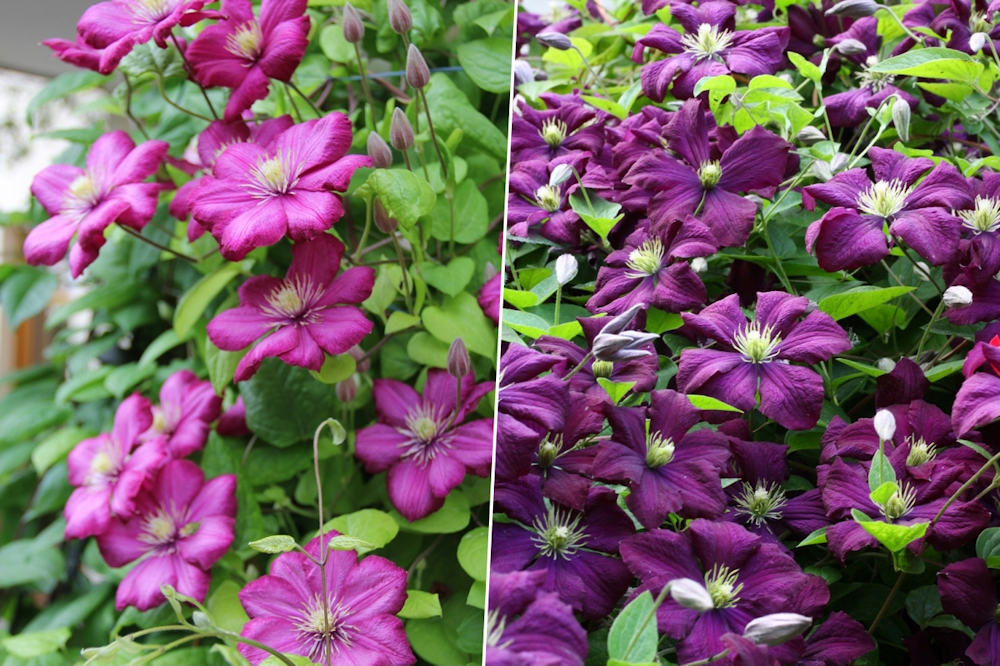
Winter Care
Some Clematis varieties are hardy, while others may require protection during cold winters. Mulch around the base of the plant in late fall to insulate the roots and prevent frost damage.
Remember, Clematis is a diverse genus with different species and cultivars, so it’s essential to research the specific variety you have or plan to grow to understand its unique needs and characteristics. Enjoy the process of growing and caring for these beautiful flowering vines in your garden!

